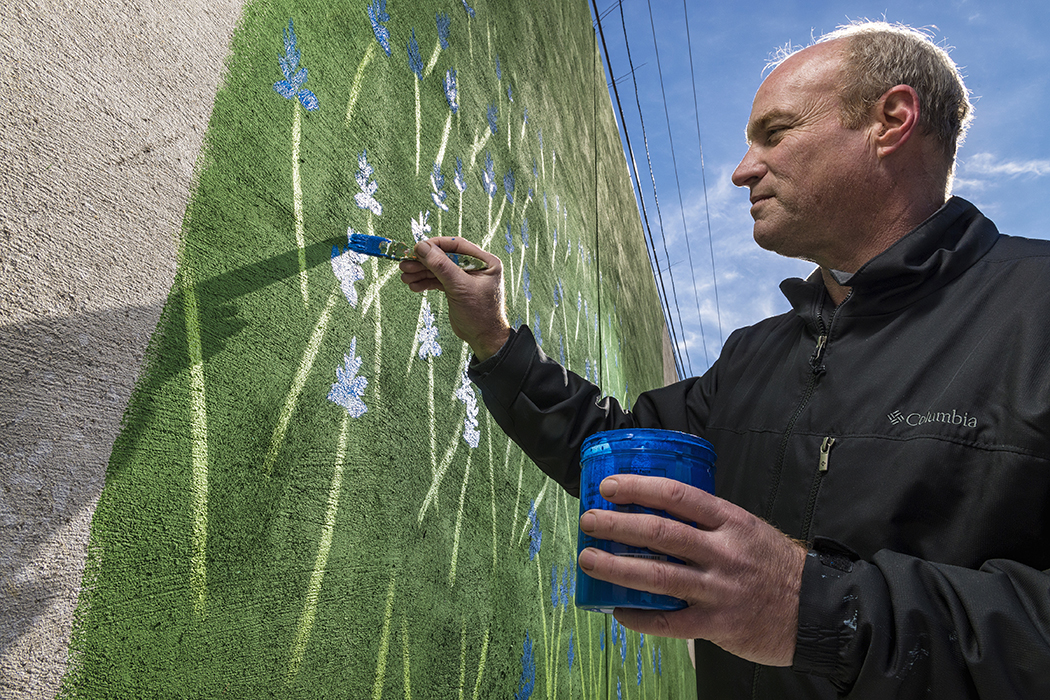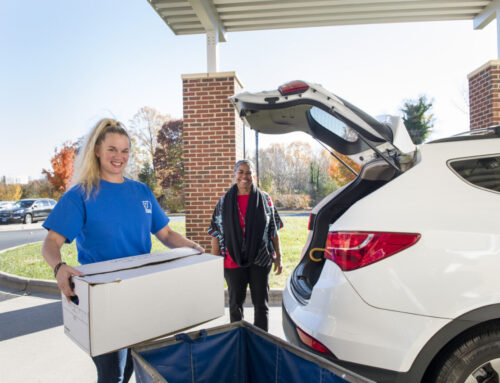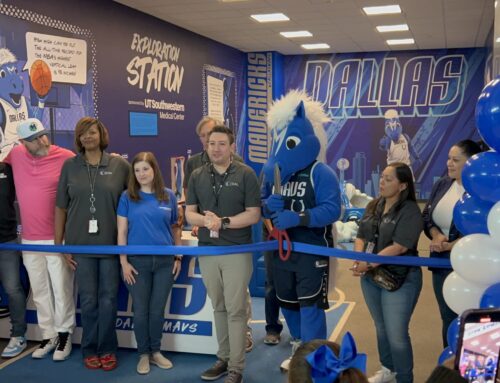
Brent Herling paints bluebonnets on the Marsh Lane mural. (Photo by Danny Fulgencio)
Brent Herling brightens the neighborhood, one wall at a time
SpongeBob SquarePants doesn’t have a job anymore, but there’s still work to be done on the mural at Marsh Lane near I-635.
Before the City of Dallas reconstructed 60 feet of the retaining wall deemed unsound, Brent Herling painted the popular cartoon holding up the decorated barrier. SpongeBob’s legs and arms shook, as if he was using all his strength to keep the structure from collapsing.
The wall, including the cartoon, was demolished in May. The bamboo, bluebonnets and benches that once covered the cement disappeared, too, along with the tree trunks and cattails.
Herling is determined to repaint the mural. A car accident left him seriously injured for seven months, but he still managed to finish a few touch-ups.
When the weather is warm, he attaches paint cans to the handles of his gas-powered scooter and heads to Marsh Lane from his Glen Meadows home. He spends weekends with his wife redoing the mural, and he takes late-night excursions there to remove any tagging from the concrete.
“It hopefully spoils their spirit,” he says of the taggers.
His disdain of graffiti and his love of the neighborhood inspired his Forest Lane mural restoration efforts in 2014. Herling, who attended W.T. White in 1976 before transferring to Skyline, lives with his wife and children in his remodeled childhood home.
The Forest Lane mural first was painted in 1976, and it’s nostalgic for many former cruisers. It hadn’t been redone since 1993, so Herling purchased copious amounts of brightly colored paint and asked for the community’s help. Local students and longtime neighbors showed up by the dozens to restore the psychedelic images.
Most of the neighbors supported Herling’s endeavor, but it became controversial when homeowner Danny Scott, whose property abuts the wall, called the mural a “hideous eyesore.” His comments sparked a debate about whether the city or the residents owned the property, which, for the record, is still unclear, although restoration efforts were completed nonetheless.
Painting the Marsh Lane mural has been far more peaceful for Herling, who finds the tedious process therapeutic. Instead of navigating City Hall, he simply went door-to-door seeking the neighbors’ approval, and the city has yet to give him any grief about the project.
“I try to paint something that doesn’t cause commotion in the neighborhood,” he says.
Pieces of the Herlings’ lives — like Karen’s garden and their dog Max — are part of the mural. When tornadoes hit North Texas the day after Christmas in 2015, his daughter added the red Salvation Army logo and a flower for each life lost.
Vines sprouting children’s handprints meander down the wall when Herling invited local schools to assist in the painting. When someone complained that it looks amateur, Herling’s response was: “It should.”
“They can’t mess anything up, so let them try,” he says.
Herling himself is no expert. His mother owned an ancient art gallery and he sculpts, but he’s only put a paintbrush to cement, never canvas or paper.
“This is easy stuff,” he says. “The person who looks at it tends to see it at 35 miles per hour.”
The Marsh Lane mural isn’t as iconic as its Forest Lane counterpart, but it is becoming engrained in the neighborhood. Herling was ecstatic after a Lowe’s cashier told the store manager, “Everybody knows that mural,” as he haggled the cost of paint. People honk as they drive by, and a few even donate money to Herling, who paid for the entire project himself out-of-pocket.
“It feels good spending time and money doing something for everyone else,” he says.






